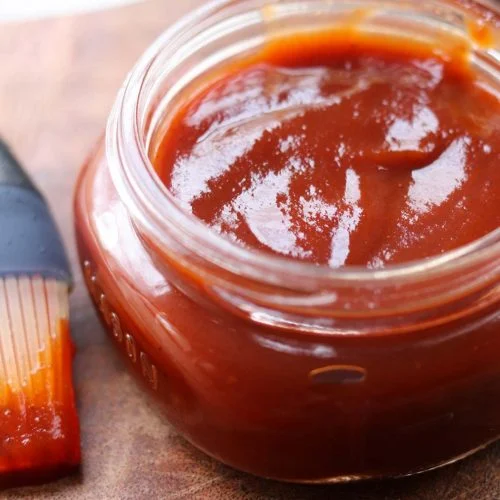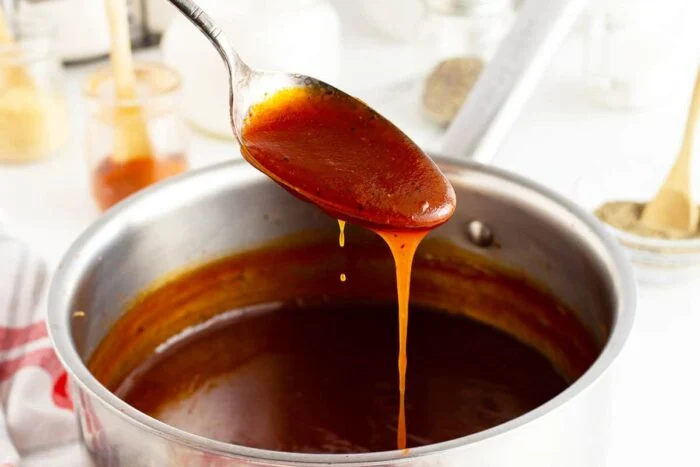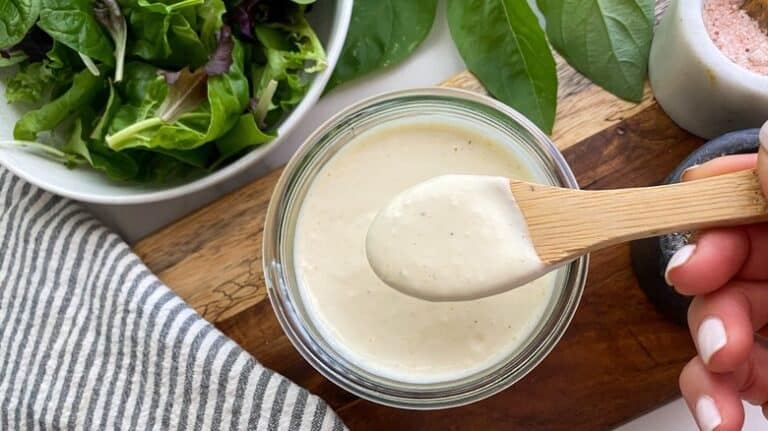How to Smoke a Pork Butt at 250
Picture this – you’re hosting a backyard barbecue, and you’ve just revealed a perfectly smoked pork butt. The aroma of smoked meat wafts through the air, mouths water, and your guests marvel at your BBQ prowess.
How did you achieve this culinary masterpiece? The secret lies in smoking the pork butt at a steady 250 degrees Fahrenheit, a process that breaks down the meat’s fibers, rendering it delectably tender and infused with smoky flavor.
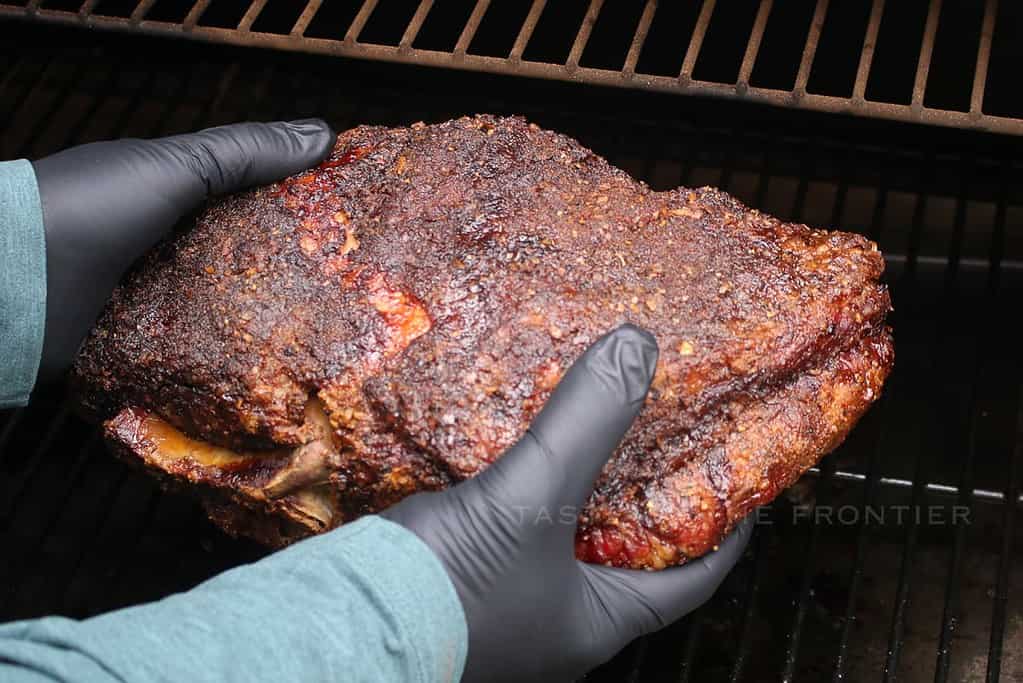
Imagine being able to replicate this scene at your own gatherings. You can impress your friends and family with your skills, and serve up a mouthwatering dish that will be the talk of the party.
This guide will walk you through the step-by-step process of How to Smoke a Pork Butt at 250, even if you’ve never attempted smoking meat before. Read on to learn how to transform a simple pork butt into a show-stopping main course.
What is Smoking a Pork Butt at 250?
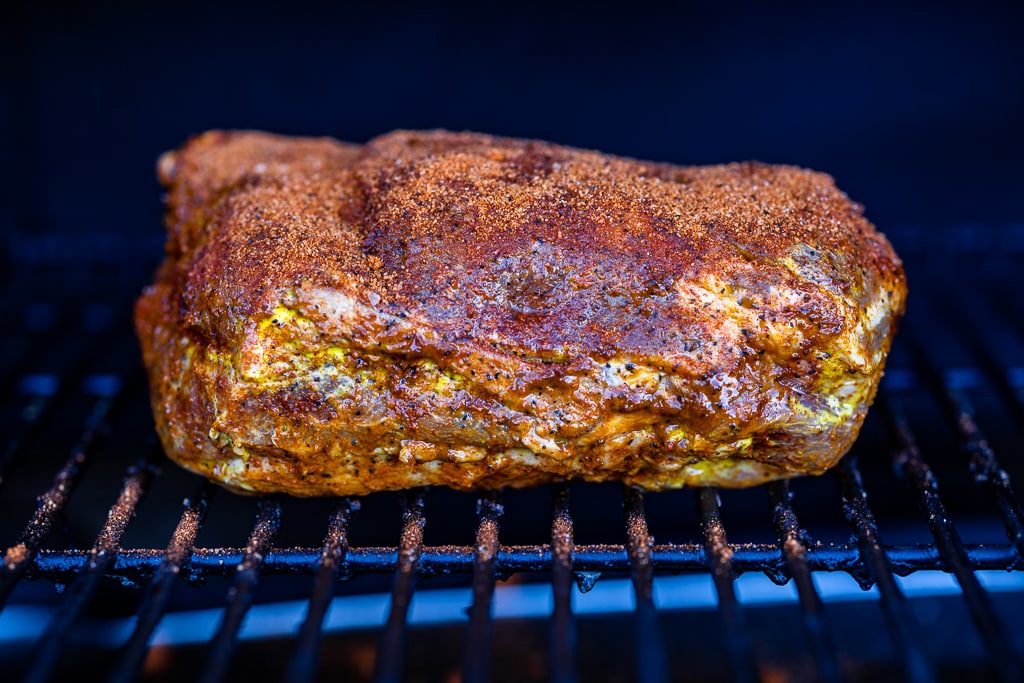
Smoking a pork butt at 250 degrees Fahrenheit is a low-and-slow cooking technique that transforms a relatively inexpensive cut of meat into a tender, flavorful delicacy. This method of cooking involves using a smoker or grill to create indirect heat and smoke, which slowly cooks and imparts a deep, smoky flavor into the meat.
The term “pork butt” can be a bit misleading as it does not come from the rear of the pig. Instead, it’s derived from the upper portion of the pig’s shoulder and includes part of the shoulder blade. Also known as a Boston butt or pork shoulder, it’s a marbled, fatty cut of pork that is incredibly flavorful when properly cooked.
The temperature of 250 degrees Fahrenheit is crucial in this process. At this heat, the pork butt cooks slowly, allowing the tough connective tissues to break down over several hours. This results in a finished product that is juicy, tender, and full of flavor. It’s worth noting that “how long to smoke a pork butt at 250″ isn’t a question with a straightforward answer. The actual cooking time can vary based on factors such as the exact weight of the meat and the consistency of your smoker’s temperature.
Knowing how to smoke a pork butt at 250 can elevate your barbecue game and provide you with a versatile, crowd-pleasing dish perfect for any occasion. Whether it’s for pulled pork sandwiches, tacos, or served alongside traditional barbecue sides, a well-smoked pork butt is a testament to your culinary skills.
Reasons You Need to Know How to Smoke a Pork Butt at 250
Knowing how long to smoke a pork butt at 250 degrees is integral to mastering the art of barbecue. The precise control of time and temperature are two factors that can greatly influence the outcome of your smoked pork butt. Let’s delve into the specific reasons why this knowledge is important:
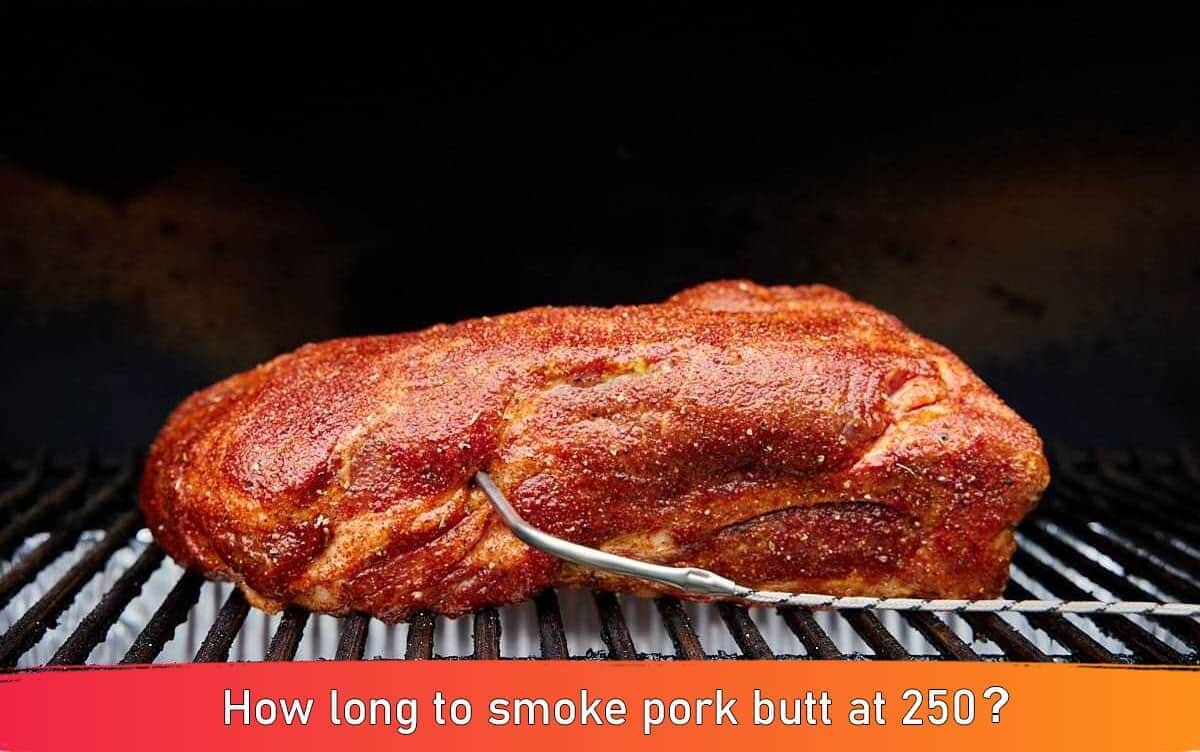
- Quality and Texture of Meat: The cooking time of a pork butt directly affects its tenderness. Too little time, and the tough connective tissues won’t fully break down, leaving you with meat that’s chewy rather than succulent. Too much time, and the meat may become overly tender or even dry out.
- Flavor Development: Smoking is not just a means to cook the meat; it’s also an opportunity to infuse it with flavor. Knowing how long to smoke a pork butt at 250 will ensure that the meat has ample time to absorb the smoky aroma from the wood chips or pellets, enhancing the depth of its taste.
- Food Safety: Undercooked pork can lead to foodborne illnesses. By understanding how long to smoke a pork butt at 250, you’ll be able to ensure the meat reaches the safe internal temperature of 145 degrees Fahrenheit, as recommended by the USDA.
- Planning and Timing: If you’re organizing a meal or a gathering, knowing how long to smoke a pork butt at 250 will help you plan your cooking schedule. It allows you to estimate when the meat will be ready, so you can time the preparation of your other dishes accordingly.
- Culinary Mastery: Knowledge of how long to smoke a pork butt at 250 is a sign of true barbecue mastery. It showcases your understanding of how heat and smoke interact with different types of meat, and your ability to produce consistently excellent results.
In summary, the art of smoking a pork butt at 250 goes beyond simply placing the meat in the smoker. It’s a delicate balance of time, temperature, and technique, all of which contribute to the final, flavorful result. With this knowledge at your disposal, you’ll be well-equipped to produce a delicious, tender, and safe to eat pork butt that your guests will love.
Step-by-Step Instructions on How to Smoke a Pork Butt at 250
Before we dive into the steps, it’s essential to remember that patience is vital when smoking a pork butt. The process can take anywhere from 1 to 1.5 hours per pound of meat, depending on a variety of factors, including the exact temperature of your smoker and the size of the pork butt.
Here are the steps:
- Prepping the Pork Butt: Trim excess fat, apply a dry rub, and let it sit for at least an hour or overnight in the fridge.
- Preheating the Smoker: Heat your smoker to 250 degrees Fahrenheit.
- Smoking the Pork Butt: Place the pork butt in the smoker, fat side up.
- Monitoring the Smoke and Temperature: Regularly check to maintain consistent smoke and temperature.
- Testing for Doneness: Check internal temperature with a meat thermometer.
Let’s dive into each step for a closer look.
Prepping the Pork Butt
The first step to smoking a pork butt is to prepare it properly. This starts with trimming off the excess fat from the pork butt. The goal is to leave about a quarter-inch of fat, which will render down during the smoking process and keep the meat moist.
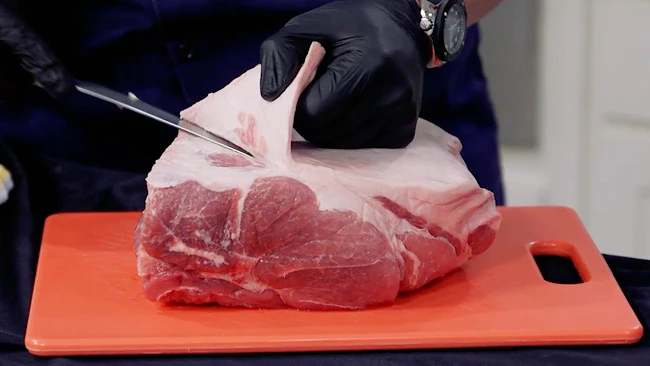
Next, you’ll need to apply your dry rub. This can be any combination of spices that you like, but a basic mix might include paprika, brown sugar, salt, pepper, and garlic powder. Apply the rub generously to all sides of the pork butt, pressing it in to make sure it sticks.
Once your pork butt is rubbed, let it sit for at least an hour, but ideally overnight in the refrigerator. This will allow the flavors from the rub to penetrate the meat.
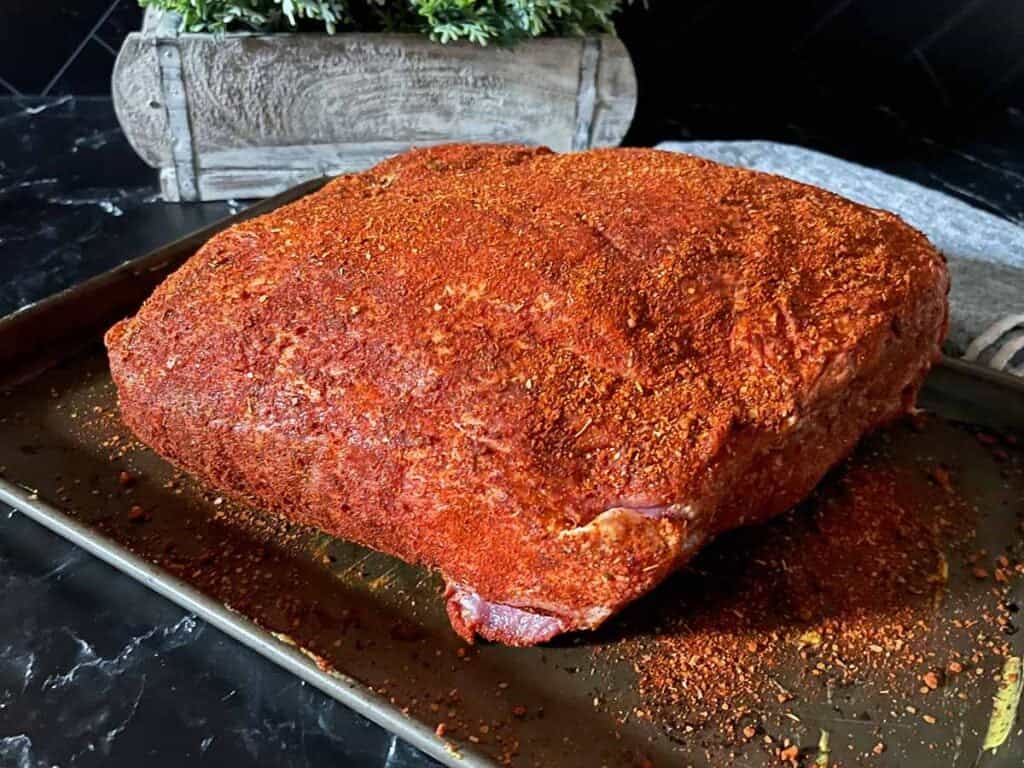
Preheating the Smoker
Before you can start smoking, you’ll need to preheat your smoker to the proper temperature. For smoking a pork butt, this is usually around 250 degrees Fahrenheit. Use a reliable thermometer to ensure your smoker is at the right
Smoking the Pork Butt
Once your smoker is preheated, it’s time to start cooking. Place the pork butt in the smoker, fat side up. This allows the fat to render down and keep the meat moist during the long cooking process.
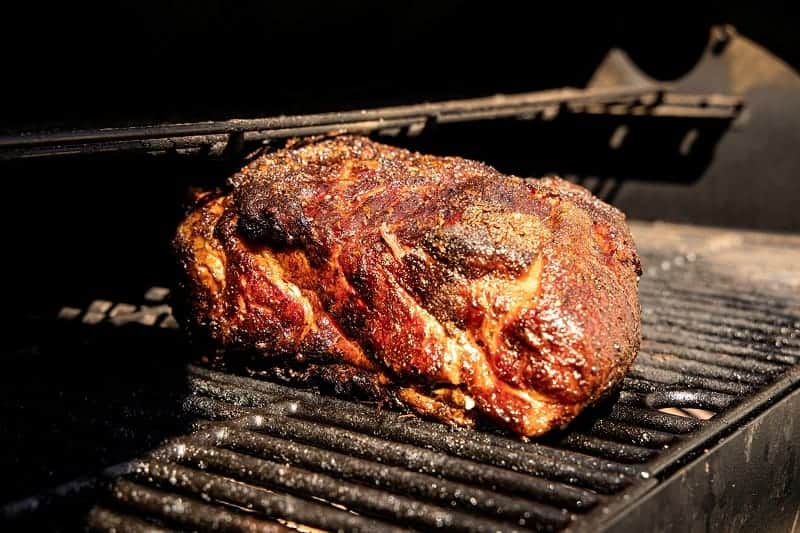
Now comes the main part – smoking the pork butt. Close the smoker and let the meat cook. You don’t need to do much during this stage except maintaining the smoker’s temperature and ensuring it’s producing enough smoke. You may want to use a wireless thermometer to keep track of the pork butt’s internal temperature without having to open the smoker frequently.
Monitoring the Smoke and Temperature
As the pork butt smokes, you’ll want to regularly check your smoker to ensure it’s maintaining a consistent temperature of 250 degrees Fahrenheit and producing enough smoke. You can adjust the vents on your smoker as needed to increase or decrease the temperature.
Remember, “if you’re looking, you’re not cooking.” Minimize the number of times you open the smoker to avoid letting out heat and smoke.
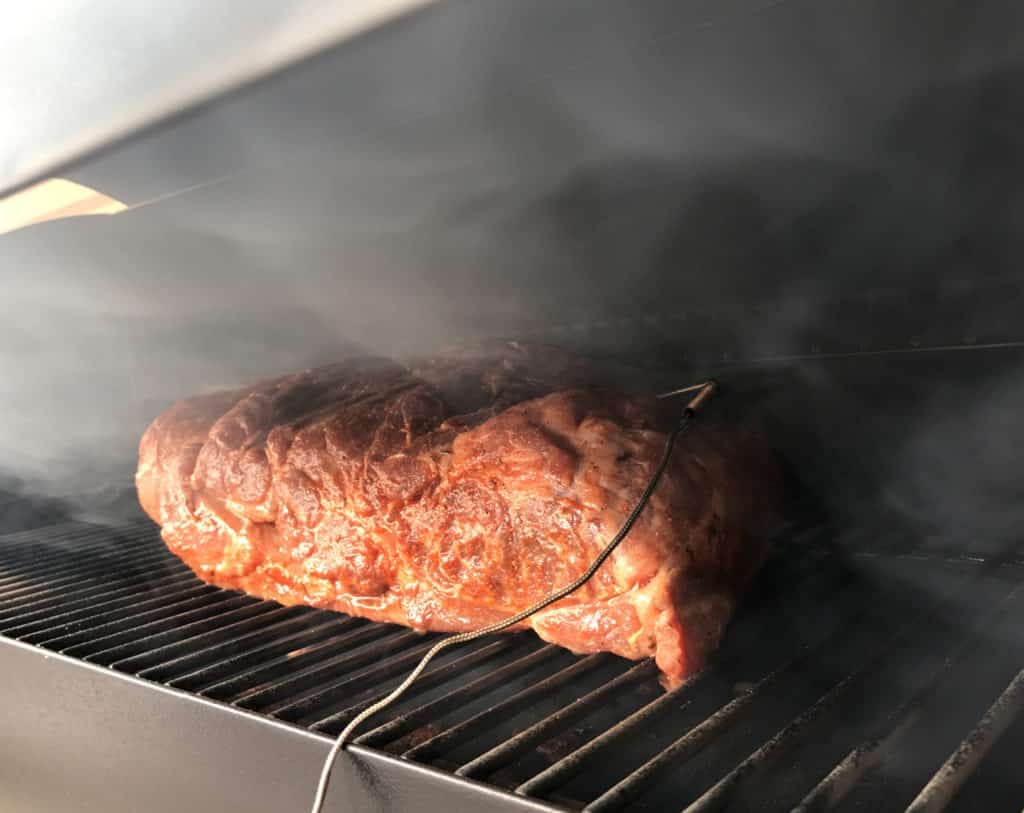
Testing for Doneness
After several hours of smoking, it’s time to check your pork butt for doneness. The best way to do this is by checking the internal temperature with a meat thermometer. The target temperature for a smoked pork butt is around 195-203 degrees Fahrenheit.
Remember, the time to reach this temperature will vary depending on the size of your pork butt and the exact temperature of your smoker. A good rule of thumb is to plan for about 1 to 1.5 hours per pound when smoking at 250 degrees Fahrenheit.
Key Considerations for Successfully Smoking a Pork Butt at 250
When you decide to smoke a pork butt at 250 degrees, it’s not just about setting the temperature and forgetting about it. There are several other considerations that come into play, each contributing significantly to the final product’s taste, texture, and quality.
Choosing the Right Pork Butt: Despite its name, a pork butt is actually a cut from the upper part of the pig’s shoulder. Also known as a Boston butt, it’s a large, meaty cut with plenty of marbling, which helps keep the meat moist during the long cooking process. Look for a pork butt that has a thick fat cap on one side; this will melt slowly as the meat cooks, keeping it juicy and adding flavor.
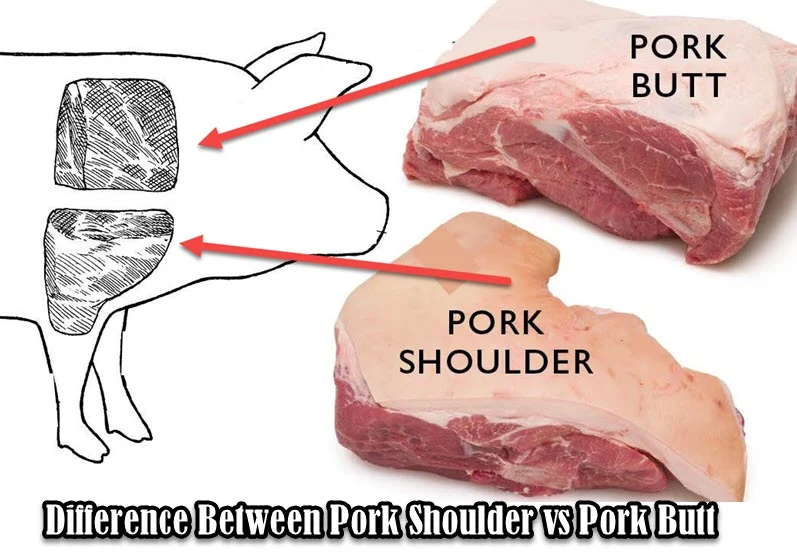
Preparation and Seasoning: Many pitmasters swear by a good dry rub to maximize the flavor of their smoked pork butt. The rub, which usually contains salt, pepper, sugar, and a variety of herbs and spices, is massaged into the meat before cooking. Some cooks also inject a marinade into the meat for additional flavor and moisture.
Maintaining a Consistent Temperature: One of the most critical considerations when smoking a pork butt at 250 is to keep the smoker’s temperature steady. Fluctuations in temperature can lead to uneven cooking or change the cooking time. Regularly monitor the temperature of your smoker to ensure it stays as close to 250 degrees as possible.
Monitor the Meat’s Internal Temperature: Besides monitoring the smoker’s temperature, it’s also essential to keep track of the pork butt’s internal temperature. This is the best way to gauge the meat’s doneness. A digital probe thermometer is a useful tool for this. For pork butt, you’re aiming for an internal temperature of around 195-205 degrees Fahrenheit.
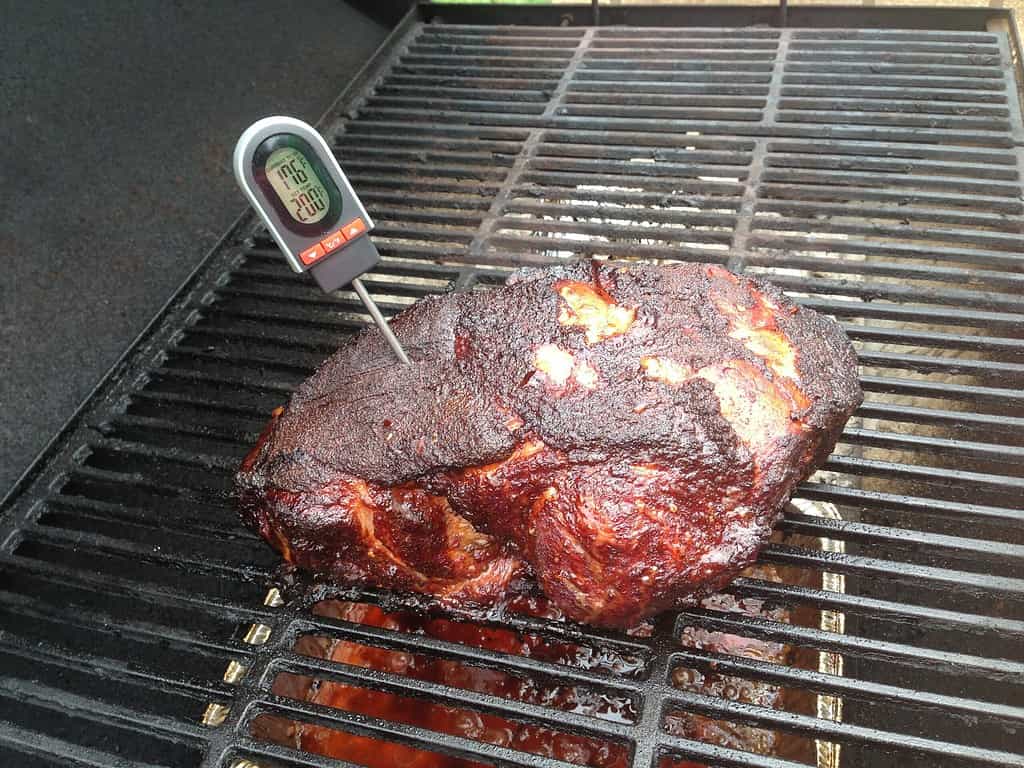
Resting the Meat: Once your pork butt reaches the desired internal temperature, it’s not ready to serve just yet. It needs to rest, allowing the juices to redistribute throughout the meat. This step will ensure that your smoked pork butt is juicy and tender.
In conclusion, knowing how long to smoke a pork butt at 250 isn’t the only crucial aspect of this process. By paying close attention to the above factors, you can enhance the flavors and textures of your pork butt, turning a simple cut of meat into a sublime barbecue experience.
Taking it to the Next Level: Enhancing Your Smoked Pork Butt
Smoking a pork butt at 250 degrees Fahrenheit for the right length of time can result in a succulent, flavorful meal that’s a delight to the senses. However, if you’re ready to take your smoked pork butt to the next level, there are a few tricks and techniques that can elevate this humble cut of meat to a gourmet feast.
Experiment with Wood Chips: Different types of wood impart different flavors when used in a smoker. Hickory and oak provide a robust, classic smoke flavor, while apple and cherry woods offer a sweeter, more delicate taste. Mix and match wood types to discover your unique flavor profile.
Craft Your Own Rub: Your choice of seasoning can dramatically change the flavor of your smoked pork butt. While store-bought rubs can be convenient, creating your own allows you to tailor the flavors to your liking. An effective rub often includes a balance of sweet, salty, spicy, and savory elements. Don’t be afraid to experiment with different spices and herbs.
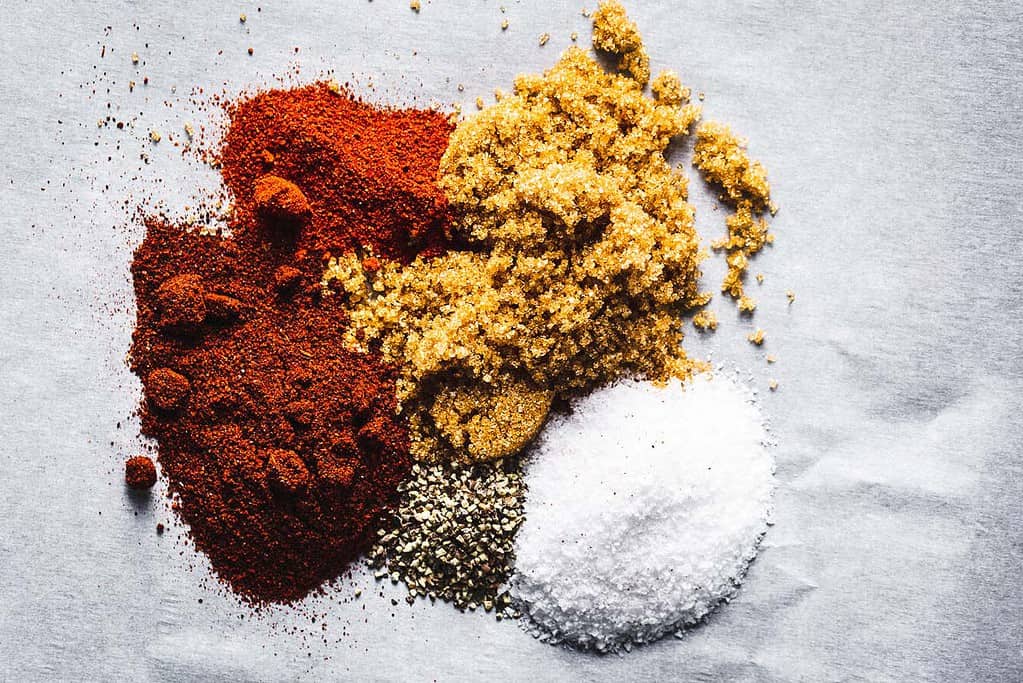
Use a Mop sauce: A mop sauce is a thin, flavorful liquid that’s brushed onto the meat periodically during smoking to keep it moist and add extra flavor. This could be as simple as a mix of apple cider vinegar and water, or a more complex concoction with broth, spices, and other ingredients.
Try a Different Cooking Method: Once you’ve mastered how long to smoke a pork butt at 250, you might want to experiment with other cooking methods. For example, the Texas Crutch method involves wrapping the meat in aluminum foil for part of the cook time to speed up the cooking process and prevent the meat from drying out.
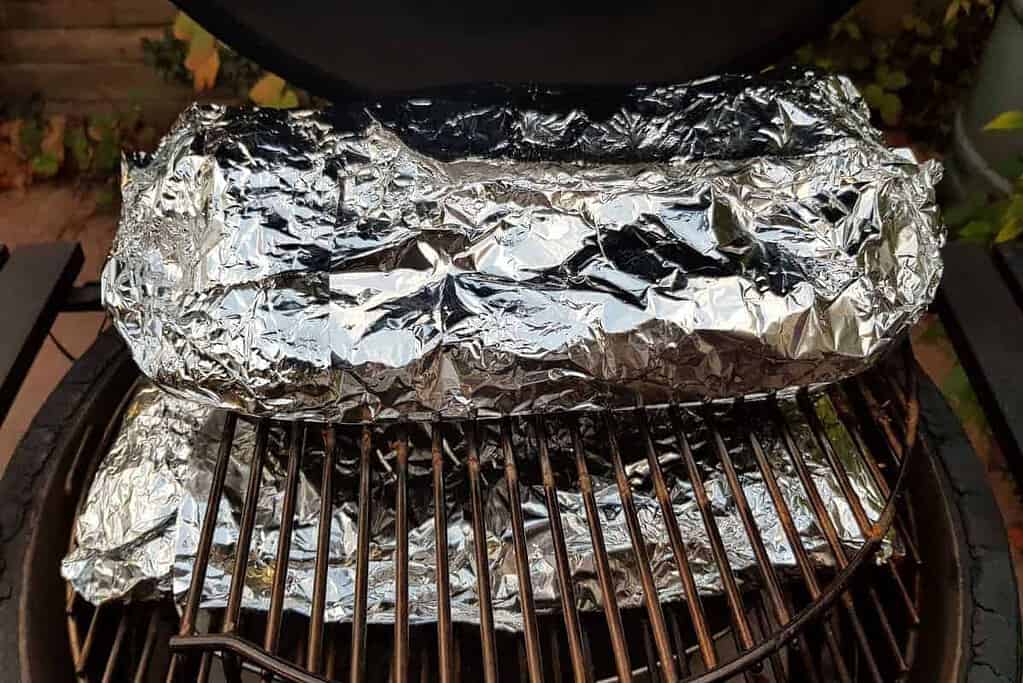
Finish with a Glaze: Adding a glaze during the last hour of cooking can provide a sticky, sweet, and flavorful exterior to your pork butt. This could be a simple barbecue sauce, or a homemade glaze using ingredients like honey, brown sugar, or fruit preserves.
By incorporating these strategies into your cooking process, you can turn a simple smoked pork butt into a truly extraordinary dish that’s sure to impress. It’s all about exploration and enjoying the process – so get creative and have fun with it!
Alternatives to Smoking a Pork Butt at 250
While knowing how long to smoke a pork butt at 250 degrees Fahrenheit is a fundamental skill for any barbecue enthusiast, there are also plenty of other methods for cooking this versatile cut of meat. Here are a few alternatives that you might consider:
Roasting: If you don’t have a smoker, roasting is a great alternative. This method involves cooking the pork butt in an oven at a relatively low temperature until it’s fall-apart tender. While you won’t get the smoky flavor that comes with using a smoker, you can still achieve a flavorful crust by searing the meat before roasting or by using a flavorful dry rub.
Slow-Cooking: Using a slow cooker is another alternative that requires minimal hands-on time. Simply season the pork butt, place it in your slow cooker, and let it cook on low for 8-10 hours. The result is tender, flavorful pork that can be shredded and used in a variety of dishes.

Braising: This method involves searing the pork butt on all sides and then cooking it slowly in a small amount of liquid. This can be done on the stovetop or in the oven. The liquid not only helps to keep the pork moist, but it also infuses the meat with whatever flavors you’ve included in the braising liquid.
Pressure Cooking: If you’re short on time, a pressure cooker or Instant Pot can be a lifesaver. These devices use high pressure to cook food quickly, meaning you can have a tender, flavorful pork butt ready in a fraction of the time it would take in a smoker or oven.
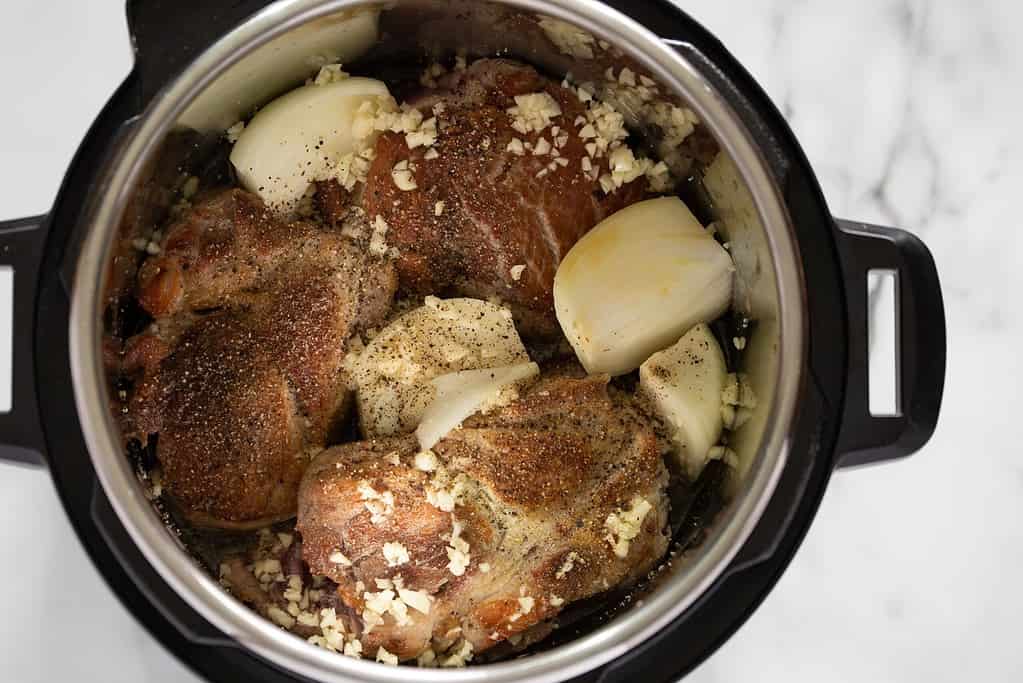
Grilling: While it’s a bit more challenging to cook a large cut like a pork butt on a grill, it’s definitely possible. The key is to use indirect heat and to keep the grill at a consistent temperature, much like you would with a smoker.
Each of these methods offers its own unique advantages and flavors, so don’t feel limited to only smoking your pork butt. Explore these alternatives and you might just find a new favorite cooking method.
Wrapping Up
Smoking a pork butt at 250 degrees Fahrenheit might seem like a daunting task, especially for newcomers to the world of barbecue. But once you understand the process and the variables involved, it becomes a simple, albeit time-consuming, method of producing incredibly delicious and tender pork.
In my own experience, the rewards far outweigh the effort. There’s something truly satisfying about serving up a perfectly smoked pork butt to friends and family. It’s a culinary skill that impresses every time and opens up a world of different dishes and flavors.
Remember, the key is patience and keeping a consistent temperature. Whether you’re a novice or a seasoned griller looking to refine your smoking skills, I hope this guide proves useful on your journey to mastering the art of smoking a pork butt. Happy smoking!


